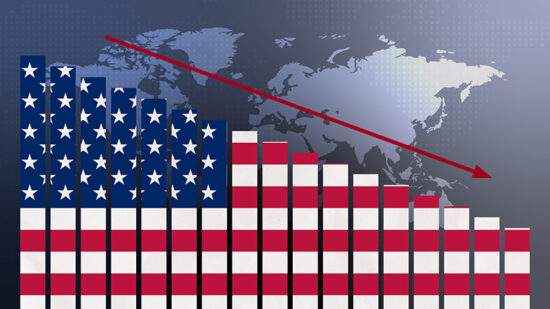The latest Global Wealth Report from UBS and Credit Suisse predicts that global wealth will rise by 38%, to $629trn (£492trn, €575trn) by 2027.
This is despite 2022 being the first year of wealth decline since 2008.
The report estimates that wealth per adult will reach $110,270 in 2027 and that the number of millionaires will reach 86 million, while the number of ultra-high-net worth individuals (UHNWIs) is likely to rise to 372,000.
The findings also showed that growth of middle-income markets will be the primary driver of global trends.
In 2022, total net private wealth fell by $11.3trn (-2.4%) to $454.4trn at the end of 2022. Wealth per adult also declined by USD 3,198 (–3.6%) to reach USD 84,718 per adult.
UBS said that much of the decline comes from the appreciation of the US dollar against many other currencies. It also reported that financial assets contributed most to wealth declines in 2022, while non-financial assets, mainly real estate, stayed resilient, despite rapidly rising interest rates.
Regional wealth increases and losses
Regionally, the research found that the loss of global wealth was heavily concentrated in North America and Europe, which in total shed $109trn. Asia Pacific recorded losses of $2.1trn.
The US headed up the list of losses in market terms in 2022, followed by Japan, China, Canada and Australia.
Latin America had a total wealth increase of $2.4trn, supported by an average 6% currency appreciation against the US dollar.
The findings revealed that the largest wealth increases were in Russia, Mexico, India and Brazil.
In terms of wealth per adult, Switzerland continued to top the list, followed by the US, Hong Kong, Australia and Denmark, despite sizeable reductions in mean wealth in comparison with 2021.
Ranking markets by median wealth put Belgium in the lead, followed by Australia, Hong Kong, New Zealand and Denmark.
Wealth inequality falls
The report also showed that overall wealth inequality fell in 2022, with the wealth share of the global top 1% falling to 44.5%.
The number of millionaires worldwide fell by 3.5 million during 2022 to 59.4 million.
UBS said that this figure does not take into account 4.4 million “inflation millionaires” who would no longer qualify if the millionaire threshold were adjusted for inflation in 2022.
Global median wealth increased by 3% in 2022, in contrast to the 3.6% fall in wealth per adult.
For the world as a whole, median wealth has increased five-fold this century at roughly double the pace of wealth per adult, largely due to the rapid wealth growth in China, the report found.
Shifting meaning
Iqbal Khan, president of global wealth management at UBS, said: “This year’s Global Wealth Report reveals insights about the state of our economy and society, as well as the shifting meaning and potential of prosperity.
“This analysis of household wealth covers the estimated wealth holdings of 5.4 billion adults around the world and across the wealth spectrum. It looks to future trends, helping us to frame expectations, understand the ever-changing nature of wealth creation and better conceive of the power of wealth to broadly benefit our society.”
Anthony Shorrocks, economist and author of the report, added: “Much of the decline in wealth in 2022 was driven by high inflation and the appreciation of the US dollar against many other currencies.
“If exchange rates were held constant at 2021 rates, then total wealth would have increased by 3.4% and wealth per adult by 2.2% during 2022. This is still the slowest increase of wealth at constant exchange rates since 2008. Keeping exchange rates constant but counting the effects of inflation results in a real wealth loss of –2.6% in 2022.
“Similarly, financial assets contributed most to wealth declines while non-financial assets (mostly real estate) stayed resilient, despite rapidly rising interest rates. But the relative contributions of financial and non-financial assets may reverse in 2023 if house prices decline in response to higher interest rates.”.








